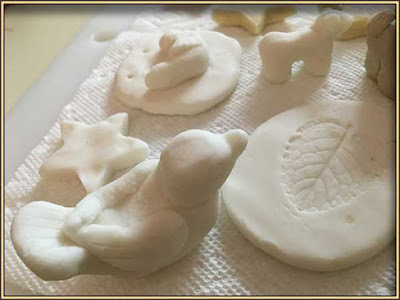To use model aeroplanes in a wargame effectively, you really need some way to indicate that it is a flying machine. I use magnetic flight stands made from 3.2mm acrylic rod.
The magnets (5x3mm neodymium) are glued to the end of the acrylic rod with epoxy. It's important that the rod and magnet are perpendicular, or else the models will be wonky when attached to the magnet.
I achieve this with the jig shown in the photograph: the jig sits flat and square on the workbench, and the acrylic rod is held in a perfectly vertical groove in one edge. The magnet is sitting on some masking tape on a steel rule, which is also lying flat on the benchtop. Then all I have to do is add a blob of epoxy, bring the two components together, and wait for the glue to set.
NOTE: I've found that it's better to put a piece of light card between the acrylic rod and the rubber bands, as the rod then moves more freely in its slot rather than being grabbed by the rubber. It is still held more than firmly enough for the job.
I glue a nail-head into a socket in the belly of my little aeroplane, which will cling to the magnet on the end of the rod.
It looks huge and obvious on this 1:144 scale Fokker Dr1, but when the model is the right way up and in use, it's fairly unobtrusive.
The Fokker is something of a special case: the undercarriage fairing would get in the way of the flight stand, so the nail-head has to stand a lot more proud than on most models. Normally the flat of the head can be right up against the belly of the model.
Until recently I've been using steel washers as the base for my flight stands (see here for that process), but now I've started using 3d-printed bases. The washers have the advantage of providing their own weight, but the 3d-printed bases are socketed so that rods of different lengths can be swapped out to deal with altitude differentials. I've designed the bases so that I can fill them with bits of lead ballast and what-not glued in place, and then cover all that clutter with some sort of terrain effect.
I've put STLs for these hex bases in 25mm, 30mm, 40mm and 50mm on Thingiverse at https://www.thingiverse.com/thing:6396827. There's also an STL there for an alignment jig for positioning the acrylic rod and magnets.
A couple of days later...
Here is a set of stands being glued up on my 3d printed jig.
I went for six stands at a go, because that will cater to two 3-plane flights.
At the moment I'm doing stands in 30mm, 60mm, 90mm and 120mm heights. I could go further to 150 and 180, but I fear they'd become a bit unstable, especially with 1:144 scale models mounted.
The photos below show the height range, both naked, and with some 1:300 scale aeroplanes on them.
At present these 1:300 scale models are mounted on dressmakers' pins with 2x2mm magnets glued to them. However, I'll replace those with some steel flat-headed tacks, as the magnet-to-magnet connection runs into issues with polarity.

















